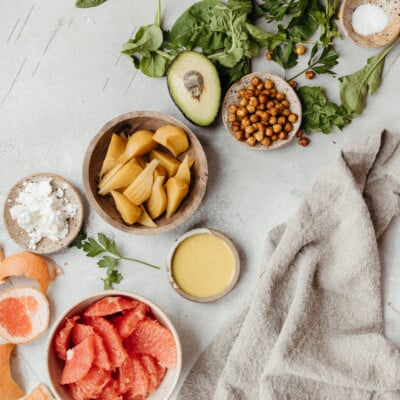In the realm of women’s health, there lies a deeply personal journey that intertwines our physical and emotional well-being: our hormones. They’re responsible for everything from our first menstrual cycle to menopause (and everything in between). What comes with the territory? Unexpected twists and turns. Enter: breast cysts. While they’re typically benign, the discomfort (and sheer terror!) they cause is a universal experience. With that in mind, today we’re delving deeper into the relationship between hormonal health and breast cysts. Together, let’s decode this intricate connection—giving you the tools to know what’s happening beneath the surface.
Featured image by Riley Reed.



Understanding Breast Cysts
So, what are breast cysts? In essence, they’re fluid-filled sacs that can develop in breast tissue. These pockets of fluid vary in size and consistency, ranging from tiny cysts (that are only detected through imaging tests) to larger, palpable masses. They can cause both discomfort and anxiety. Although the exact causes of breast cysts are not fully understood, hormonal imbalances are believed to play a significant role. Particularly, estrogen dominance. However, regular monitoring—combined with effective management strategies—can help alleviate symptoms and ensure overall breast health.
Download our cycle syncing planner to support your body throughout the month.
Breast Cysts: Signs And Symptoms
These vary from woman-to-woman, but common signs include:
- breast tenderness
- swelling
- the presence of a lump that is smooth and movable.
These symptoms may become more pronounced before menstruation when hormonal changes are at their peak. If you notice any of these symptoms, consult your healthcare professional for a proper evaluation.


How are breast cysts diagnosed?
Diagnosing breast cysts typically involves a combination of physical examinations and diagnostic tests. Your healthcare provider may conduct a clinical breast exam and order additional imaging tests such as a breast ultrasound or mammography to confirm the diagnosis and rule out other potential concerns.
Can you get breast cysts in your 20s?
Possibly, yes. Breast cysts are one of the most common benign breast conditions, particularly in women aged 30 to 50. In other words, they impact premenopausal women. Also known as fibroadenomas, this benign (noncancerous) lump can appear during a person’s reproductive years. That said, breast cysts can also appear with menopause—when a woman’s hormones are rapidly changing. In this case, they often diminish once menopause is complete.


Can hormonal imbalance cause breast cysts?
Truthfully, there’s very little in the human body that hormones don’t impact. Said differently: our hormones are like conductors. They orchestrate a symphony of influential processes—from head to toe. And as they fluctuate throughout the menstrual cycle, which can lead to changes in everything from mood and appetite to breast tissue. Estrogen and progesterone, specifically, have a profound impact on breast tissue. In fact, an imbalance of these two hormones is associated with an increased risk of breast cysts.
Looking for more on hormone health? Check out this guide on balancing your hormones naturally.
The Link Between Estrogen Dominance and Breast Cysts
Spoiler alert: it’s significant. In many ways, estrogen plays a crucial role in the female body. It’s responsible for everything from breast growth and the widening of hips during puberty to regulating the menstrual cycle as a whole. Not to mention, estrogen helps prepare the uterus for pregnancy!
That said, estrogen needs its partner-in-crime, progesterone, to maintain optimal health. When estrogen exceeds progesterone, estrogen dominance occurs. Hello, cysts. And unfortunately, these cysts often become more pronounced during times of increased estrogen levels.


How To Lower Estrogen In Your Body
How can you lower estrogen in your body? Thankfully, there are a few effective ways to address estrogen dominance:
Eat a balanced diet. Consume a diet rich in whole foods, including fruits, vegetables, whole grains, and lean proteins. Incorporate cruciferous vegetables like broccoli, cauliflower, and kale, as they contain compounds that can support hormone balance. Ideally, limit the consumption of processed foods, sugar, and inflammatory fats.
Stress management. Chronic stress can disrupt hormone balance. Implement stress management techniques such as meditation, deep breathing exercises, yoga, or engaging in hobbies and activities that help you relax and unwind.
Avoid environmental estrogens. Minimize exposure to synthetic estrogens, also known as xenoestrogens, found in certain plastics, pesticides, and personal care products. Opt for natural and organic alternatives whenever possible.
Support liver function. The liver plays a vital role in estrogen metabolism and elimination. Support liver health by reducing alcohol consumption, avoiding excessive exposure to toxins, and incorporating liver-supportive foods like leafy greens, beets, and turmeric into your diet.
Consider supplements. Certain supplements may help rebalance hormone levels. Chat with your healthcare provider about options such as DIM (diindolylmethane), calcium-d-glucarate, or herbal supplements like chasteberry and evening primrose oil.


How To Manage Breast Cysts
Fortunately, in most cases, breast cysts are harmless and don’t require treatment. However, if you experience discomfort or persistent symptoms, there are steps you can take to manage the condition effectively.
1. Restore hormonal balance
This goes without saying, but restoring hormonal balance is crucial in managing breast cysts. Lifestyle modifications, including engaging in regular exercise and managing stress levels can contribute to hormonal health. In some cases, hormonal contraceptives or hormone therapy may be prescribed to restore balance.
2. Make dietary changes
A nutritious diet is key for hormonal health. Opt for a well-balanced eating plan that includes plenty of fruits, vegetables, whole grains, and lean proteins. Reducing the consumption of processed foods, caffeine, and alcohol may also help alleviate symptoms associated with breast cysts.
3. Apply a warm compress
Over-the-counter pain relievers, such as nonsteroidal anti-inflammatory drugs (NSAIDs), can provide temporary relief from discomfort. Applying warm compresses or wearing a supportive bra can also help ease symptoms!
4. Implement regular monitoring
Don’t underestimate the power of regular breast self-exams, as well as routine mammograms or ultrasounds. These are essential for monitoring breast cysts and detecting any changes. Staying vigilant and reporting any new or concerning symptoms to your healthcare provider is crucial.






